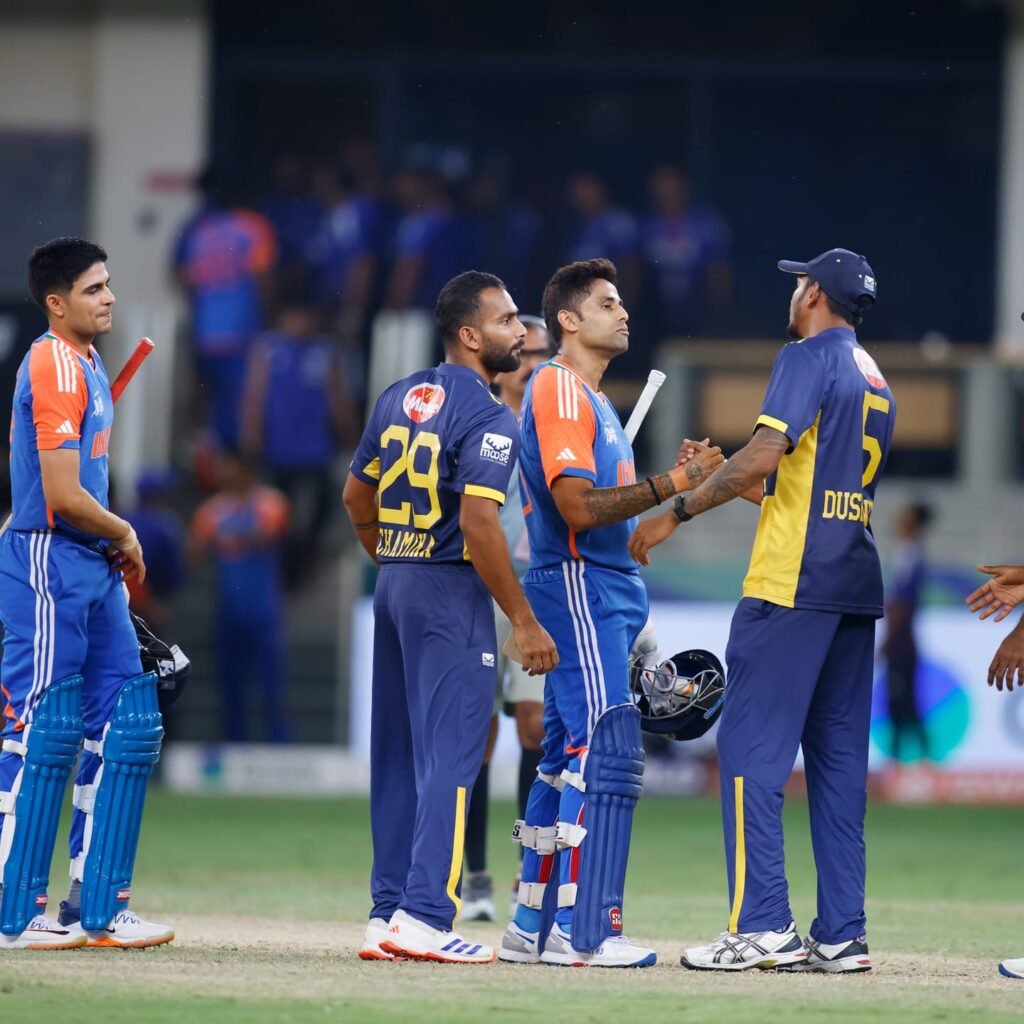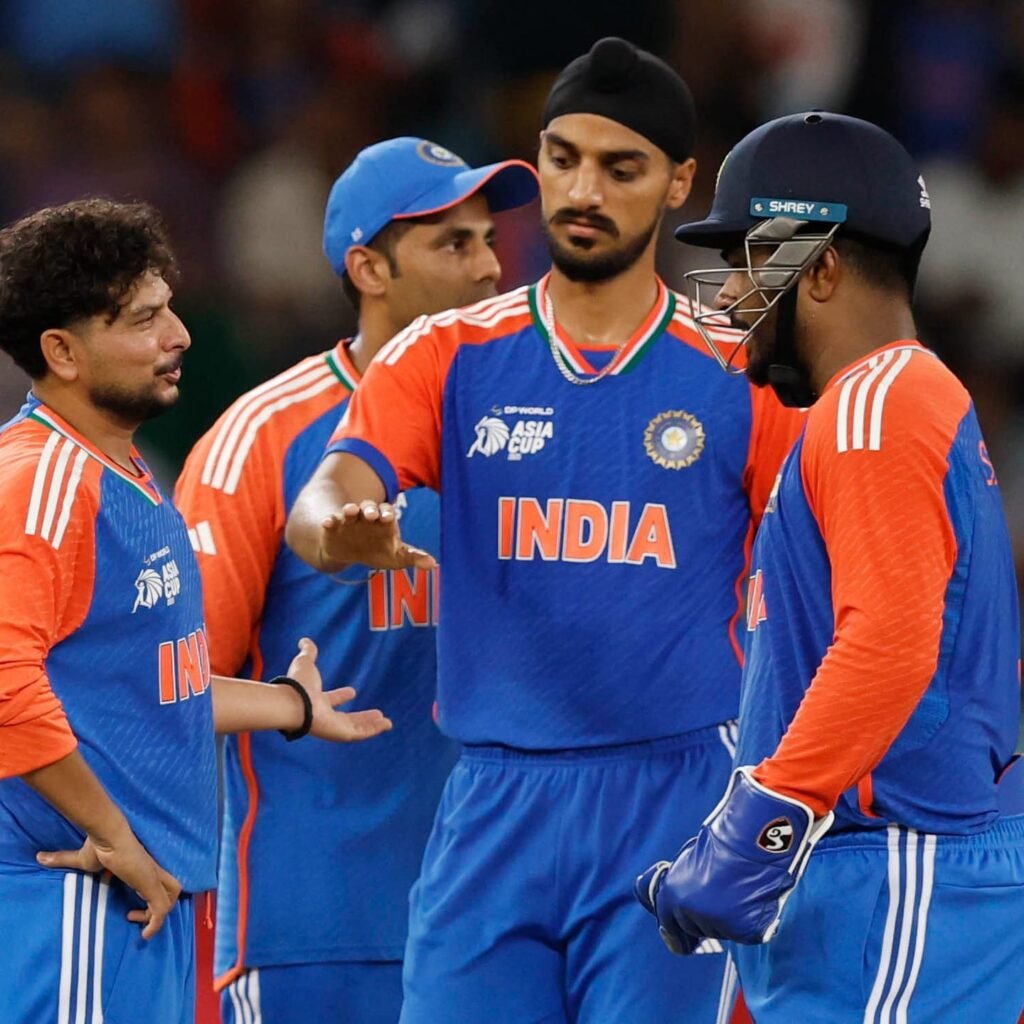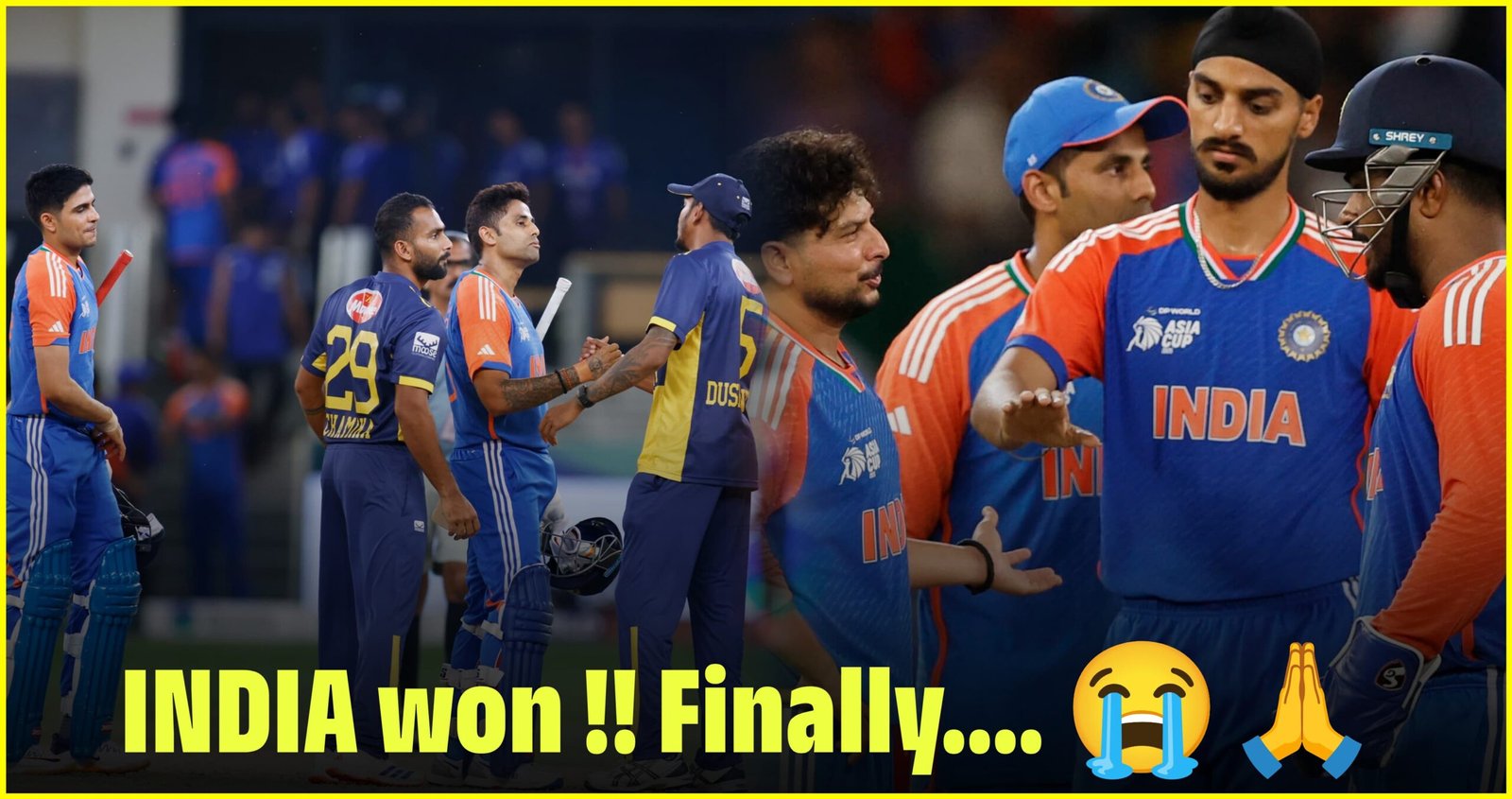High stakes in Dubai. A tied classic, a Super Over finish, and a storm over an overturned wicket. India held their nerve to edge Sri Lanka, and they stayed unbeaten heading into the final. The buzz did not stop when the last ball was bowled.
The main game swung all night. Sri Lanka rode a standout hundred and kept finding the fence under pressure. India answered with clean hitting from the top and vital runs in the middle, then scrambled in the field but refused to crack. Scores level, lights bright, Super Over time.
That is where the drama peaked. A razor‑thin call went upstairs, then got overturned, and the ground erupted. India kept their plans tight, chased a small target, and closed it out with cool heads. Sri Lanka, brave and relentless, were one shot away.

If you missed it live, you will want the key beats. Who set the tone with early boundaries, who rescued the chase, and which decisions shaped the finish. We will break down the Super Over ball by ball, the tactical moves that worked, and why the overturned wicket became the talking point.
Settle in for a crisp recap. Clear numbers, clutch moments, and what this result means for the final. No fluff, just the action that mattered and the calls that will be debated all week.
How the Main Match Unfolded: From Explosive Starts to a Dramatic Tie
Sri Lanka took first strike after the toss in Dubai, with Charith Asalanka calling the shots. India, led by Suryakumar Yadav, packed pace and spin. The XIs featured familiar names. India rolled out Abhishek Sharma, Shubman Gill, Tilak Varma, Sanju Samson, Hardik Pandya, Shivam Dube, Axar Patel, Varun Chakaravarthy, Jasprit Bumrah, and Kuldeep Yadav. Sri Lanka leaned on Pathum Nissanka, Kusal Mendis, Kusal Perera, Asalanka, Dasun Shanaka, and Kamindu Mendis.
Sri Lanka’s Strong Total and India’s Fiery Response
Sri Lanka’s innings ran through Nissanka, who batted with calm hands and clean swings. He cashed in on width, then went straight when India pulled their lines back. The early stand with Kusal Perera set the tempo, and a tidy middle stretch under Asalanka kept the board busy. India pushed back with spin, as Kuldeep and Varun broke rhythm, but Shanaka’s late strikes restored momentum.
India’s chase exploded from ball one. Abhishek Sharma cracked 61 off 31, a blur of picks over midwicket and lofts over extra cover. Gill fed him strike and added crisp drives of his own. The powerplay brimmed with intent, with fours to third man and long-on and a pair of big sixes that lifted the noise. After the break, Tilak Varma took over. His 49 off 34 was all timing and gaps, and his stand with Sanju Samson kept India in range. The pressure never dipped, and the boundary count stayed high deep into the chase.
Crucial Moments That Led to the Super Over
Tension spiked in the last three overs. A sharp catch at long-off removed a set batter, and a mix-up cost India a run-out at the non-striker’s end. Sri Lanka matched the drama, misfielding once, then pulling off a diving stop on the rope that saved two.
The flashpoint arrived with a review that flipped a wicket. The on-field out was overturned after replays, and the decision drew quick debate in the stands and on comms. Play moved on, but the clock and the nerves closed in. Harshit Rana’s tight final over for India squeezed the reply, then a skied chance fell safe and a sliced two off the last ball locked the scores. Both sides traded punches to the finish, and the tie felt inevitable, yet stunning.

Super Over Chaos: Arshdeep’s Magic and the Massive Controversy
Nerves shredded, plans stripped to basics, this Super Over was all control and calm. India trusted Arshdeep Singh at the death, then handed the bat to Suryakumar Yadav. Two quiet heroes, one fiery debate, and a finish that will replay in your head all week.
Key Plays in the Super Over That Sealed India’s Victory
Here is how the Super Over unfolded, ball by ball, with zero fluff:
- Arshdeep to start: full and straight, dot ball. India locked into the yorker plan early.
- Second ball: hard length into the hip, a scrambled single to deep square.
- Third ball: wide yorker, dot again. Sri Lanka could not free the arms.
- Fourth ball: low full toss, drilled to long-off, one run.
- Fifth ball: perfect yorker, bat jammed, dot ball.
- Sixth ball: another dart at the toes, a squeezed single. Sri Lanka finished with just 2.
Chasing 3, India kept it simple.
- Suryakumar took strike to Hasaranga. First ball, he knocked a safe single into the covers.
- Second ball, a skidder at the pads, another calm single. Scores level.
- Third ball, Hasaranga tossed it up a touch. Suryakumar waited, opened the face, and guided the winning run. No slog, no rush, just clear thinking.
The margin looked tiny, the method was huge. Arshdeep’s six balls were all about repeatable skills under pressure. Suryakumar’s three swings were textbook risk control, not highlight-reel hitting.
Why the Controversy Sparked Outrage Among Fans
The temperature spiked around two things. First, Sri Lanka backing Wanindu Hasaranga for the Super Over, even with grip getting sweaty and the ball skidding. Many fans felt pace at the stumps was the safer call with only 2 to defend. Analysts called it a “matchup gamble that backfired,” pointing to Suryakumar’s comfort working spin for ones.
Second, the umpire review that flipped an on-field decision involving Hasaranga and Arshdeep’s Super Over. A tight appeal for a dismissal went upstairs, then was overturned after replays. The third umpire ruled no conclusive edge and bat grounded behind the line. India accepted it and reset. The Sri Lankan camp looked stunned.
Why did it feel unfair to some?
- Timing: viewers argued the review took too long, killing momentum.
- Angles: social media threads claimed the footage was inconclusive.
- Rules fog: many were unsure how reviews apply in a Super Over, which added fuel to the fire.
Sri Lankan fans called it “gutting” and “harsh.” Indian fans pointed to the process and said the protocol was followed. The only thing both sides agreed on was this: in a Super Over, inches and interpretations feel like earthquakes.
Standout Stars and What This Win Means for India
Personal performances defined the night. India did not just survive pressure, they used it. The core stepped up, the plans held, and the unbeaten run stayed alive heading into a blockbuster final against Pakistan.
Heroes of the Match: Batting and Bowling Brilliance
Four names shaped the mood and the message.
- Abhishek Sharma: The tone-setter. His 61 off 31 was fearless, yet smart. The pick-up over midwicket kept the field captain guessing, and the lofts over extra cover forced the spinners short. He is not slogging, he is reading lengths early and backing quick hands.
- Tilak Varma: The glue with flair. His 49 off 34 calmed the middle. Tilak kept the board ticking with late glides and crisp punches, then cashed in when the bowlers missed full. The best part is his calm in two-paced conditions, which makes him a bankable No. 4 for the final.
- Arshdeep Singh: Ice in the Super Over. Six balls, four near-perfect yorkers, no panic. He shortened his run, hit the toes, and played percentages. That is repeatable skill, not a one-off. India will trust him at the death again.
- Suryakumar Yadav: Captaincy with clarity, batting with control. He chose matchups, not reputations, and kept fields aggressive even under heat. With the bat, three calm strokes in the Super Over told you everything. He picked gaps, not glory.
This win also reflected strategy. India backed youth, rotated bowling quickly, and used clear roles. The message to the room is simple: stick to plans, win the moments.
India’s Road to the Final: Unbeaten and Unstoppable?
Confidence is soaring, and it shows in small things. The powerplay intent is consistent. The middle overs are cleaner with Tilak and Samson. The death overs look settled with Arshdeep and support from spinners.
A brief group-stage sweep built rhythm. This Super Four escape built belief. Against Pakistan, expect India to back the same blueprint, with Abhishek’s tempo early and SKY’s matchup calls dictating the pace.
Momentum is real heading into the finale. The unbeaten tag brings pressure, but it also brings poise. If India keep their method and hold their nerve, they walk in as favorites with a point to prove.
Conclusion
India leave Dubai with belief, not just bragging rights. A tied classic, a Super Over win, and proof their death skills and calm heads travel under pressure. Sri Lanka pushed them to the edge, which sharpens India for a fierce final.
The flashpoint taught a clear rules lesson. Reviews in a Super Over follow the same protocol, and the third umpire’s evidence standard does not change. When bat, stump hit, and fielding actions collide, the first mode of dismissal under review takes priority. Clearer on-field comms and quicker broadcast cues would help fans track which law is in play, and why the call stands.
Now, eyes on the final. Keep this tab open for our ball by ball breakdown, and jump into the comments with your take on the review and India’s Super Over plan. Think Hasaranga for spin or pace at the stumps with two to defend?
Big nights are why we love the Asia Cup. Tight margins, clutch skills, and stories that linger. Thanks for reading, see you for the finale.

